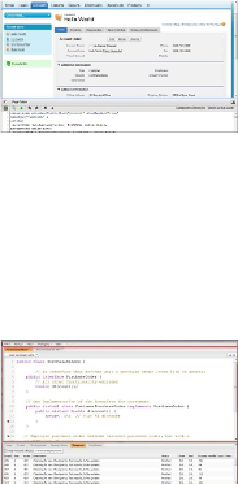Database Reference
In-Depth Information
For the Salesforce Apex language, there is a Developer Console that can be used in the
Force.com cloud to develop any code-specific application; however, the thought with
Salesforce is to get away from coding a lot of the data and visual objects. An example of
the Developer Console is shown in the following screenshot:
The issue with many off-premise scenarios is that while developing in the cloud, if a cur-
rent solution is currently working on-premise, there has to be a period of time for turnover
from on-premise to off-premise systems during which the data has to be synched to both
systems at the same time, and outages have to be scheduled. The data has to be synched
not only on a legacy system and a new system, but also on the GUI and business logic as
well. The switch from a legacy system to a new system needs to be as seamless as pos-
sible to keep the customers of the system happy. One of the problems frequently over-
looked when moving from old systems to new systems is that while new systems are be-
ing built, old systems may also be updated with enhancements, which have to be updated
in the new system as well before it is completed. There are myriad issues involved while
creating a new system, which are beyond the scope of this topic, but it will suffice to say
that the more complex the older system is, the more it can affect a new system. For the
many reasons of jumping from an old solution from an on-premise data center to a new
solution off-premise in the cloud, some of the changes can be eased with creating hybrid
solutions where an on-premise data is shared to the new cloud solution until a complete

